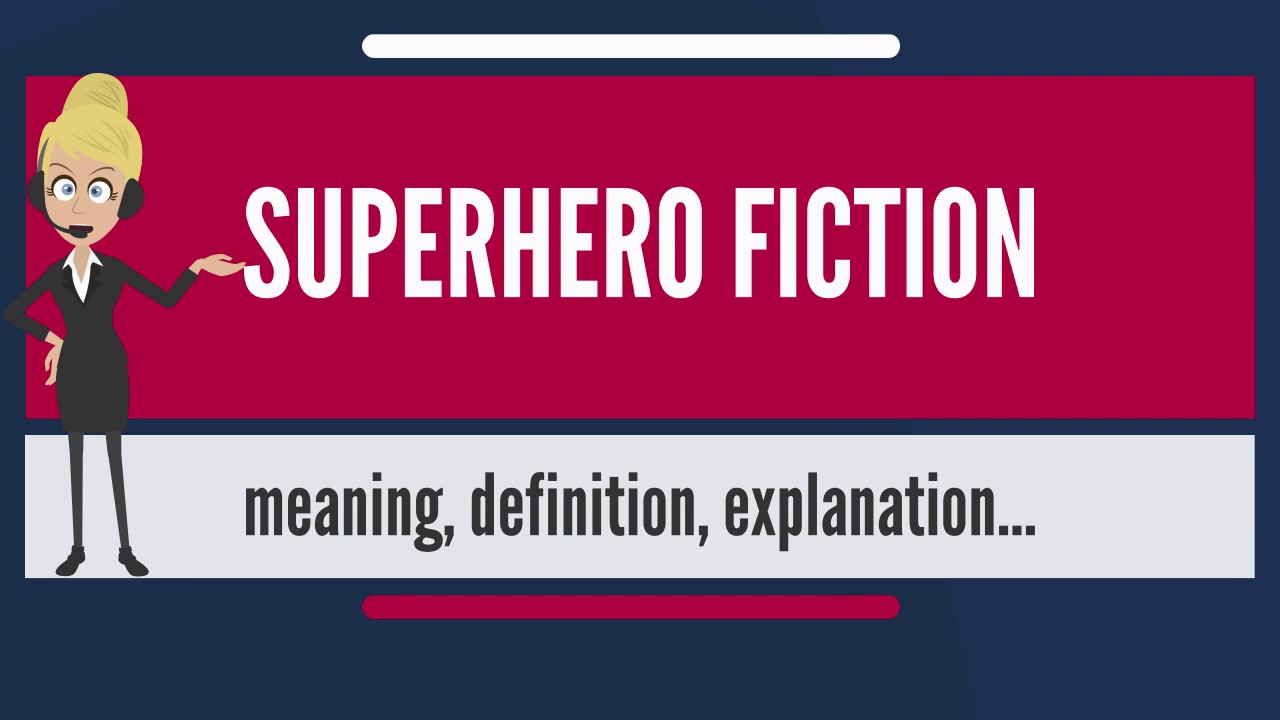What is SUPERHERO FICTION? What does SUPERHERO FICTION mean? SUPERHERO FICTION meaning – SUPERHERO FICTION definition – SUPERHERO FICTION explanation.
Source: Wikipedia.org article, adapted under https://creativecommons.org/licenses/by-sa/3.0/ license.
Superhero fiction is a genre mainly originating in and most common to American comic books, though it has expanded into other media through adaptations and original works.
The form is a type of speculative fiction examining the adventures of costumed crime fighters known as superheroes, who often possess superhuman powers and battle similarly powered criminals known as supervillains. Occasionally, this type of fiction is referred to as superhuman or super-powered fiction rather than superhero fiction in order to reflect that broader scope of both heroes and villains, as well as cover those characters with enhanced abilities that fall outside the classic superhero/supervillain dichotomy.
A superhero is most often the protagonist of superhero fiction, although some titles, such as Marvels by Kurt Busiek and Alex Ross, use superheroes as secondary characters. A superhero (sometimes rendered super-hero or super hero) is a type of stock character possessing “extraordinary or superhuman powers” and dedicated to protecting the public. Since the debut of the prototypical superhero Superman in 1938, stories of superheroes—ranging from brief episodic adventures to continuing years-long sagas—have dominated American comic books and crossed over into other media. The word itself dates to at least 1917. A female superhero is sometimes called a superheroine (also rendered super-heroine or super heroine). “SUPER HEROES” is a trademark co-owned by DC Comics and Marvel Comics.
By most definitions, characters do not strictly require actual superhuman powers to be deemed superheroes, although terms such as costumed crime fighters or masked vigilantes are sometimes used to refer to those such as Batman and Green Arrow without such powers who share other common superhero traits. Such characters were generally referred to as “mystery men” in the so-called Golden Age of Comic Books to distinguish them from characters with super-powers. Normally, superheroes use their powers to counter day-to-day crime while also combating threats against humanity by their criminal counterparts, supervillains. Long-running superheroes such as Superman, Batman, Spider-Man and Iron Man have a “rogues gallery” of such enemies. One of these supervillains might be the superhero’s archenemy. Superheroes will sometimes combat other threats such as aliens, magical/fantasy entities, natural disasters, political ideologies such as Nazism or communism (and their proponents), and godlike or demonic creatures.
A supervillain or supervillainess is a variant of the villain character type, commonly found in comic books, action movies and science fiction in various media. They are sometimes used as foils to superheroes and other heroes. Whereas superheroes often wield fantastic powers, the supervillain possesses commensurate powers and abilities so that he can present a daunting challenge to the hero. Even without actual physical, mystical, superhuman or superalien powers, the supervillain often possesses a genius intellect that allows him to draft complex schemes or create fantastic devices.
Another common trait is possession of considerable resources to help further his aims. Many supervillains share some typical characteristics of real world dictators, mobsters, and terrorists and often have aspirations of world domination or universal leadership. Superheroes and supervillains often mirror each other in their powers, abilities, or origins. In some cases, the only difference between the two is that the hero uses his extraordinary powers to help others, while the villain uses his powers for selfish, destructive or ruthless purposes.
source
